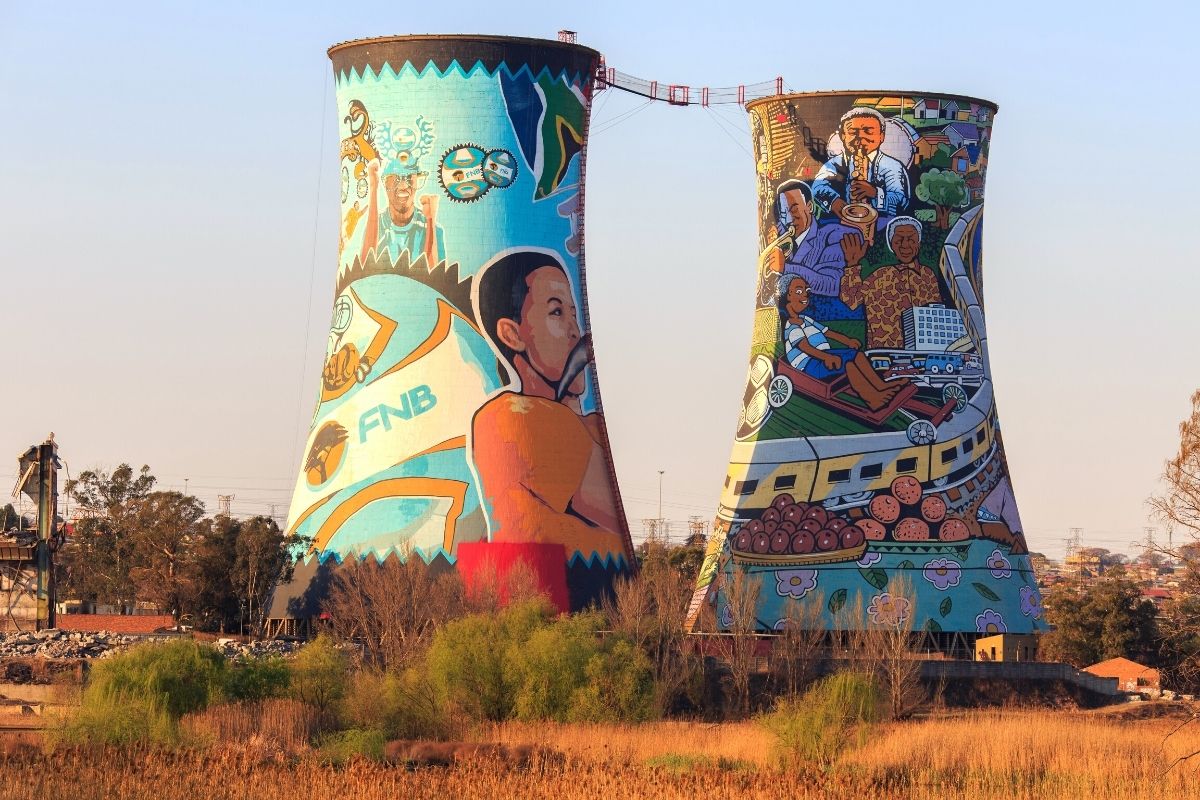Johannesburg North Attractions - Truths
Wiki Article
All about Johannesburg North Attractions
Table of ContentsExamine This Report about Johannesburg North AttractionsJohannesburg North Attractions Things To Know Before You Get ThisJohannesburg North Attractions Fundamentals ExplainedGet This Report about Johannesburg North AttractionsJohannesburg North Attractions Can Be Fun For AnyoneHow Johannesburg North Attractions can Save You Time, Stress, and Money.
The city expanded on the side of the Witwatersrand Key Reef, a subterranean stratum of gold-bearing quartz-silica conglomerate that arcs for hundreds of miles beneath the Highveld - Johannesburg North attractions. Many of the gold mines in the city ceased procedure in the 1970s, yet in its day the Witwatersrand gold market accounted for even more than 40 percent of the world's annual gold production.Johannesburg has a pleasant climate. The city delights in about eight hours of sunshine per day in both winter season and summer season.
What rainfall the city receives drops practically exclusively in the summertime months, usually in incredible late-afternoon electrical storms., where lots of residents still count on coal for gas.

About Johannesburg North Attractions
The equilibrium of the city is inhabited by whites. Holiday accommodation varies in character and quality. Soweto is well-known for its endless rows of municipally built, two-room matchbox homes, yet it also has a few prosperous territories in addition to bursting squatter camps, where tens of thousands live without water, power, or sanitation facilities.Physical growth, although rather limited by transportation, continued promptly as immigration to South Africa, and Johannesburg specifically, increased dramatically. This problem was fixed in the 1930s when the automobile was presented in automation to South Africa. Automobiles were, for the a lot of component, confined to the wealthy, and permitted them to transfer to the north of the city and commute into the centre.
Most poor suburbs were blended, with bad blacks and whites living together, although the wealthy suburbs were generally reserved for whites.
The previous system of eleven phoned number regions was reorganised in 2006. Marshalltown, as seen from the top of the Carlton Centre. The M1 and M2 run behind the buildings, and the southerly suburban areas expand past the freeway border. The central city of Johannesburg lies within the city's Region F. The number of people living in the inner city on an informal basis is unknown, as numerous are prohibited immigrants. The unemployment, education, and age accounts of the area are all unidentified, due to the trouble of acquiring dependable details about the area.
The 10-Minute Rule for Johannesburg North Attractions
Centred on the CBD, the area includes the residential areas my website of Yeoville, Bellevue, Troyeville, Jeppestown, and Berea to the east. To the west it infects Pageview (Johannesburg North attractions) and Fordsburg. There are little industrial parks to the south, such as City West-Denver and Benrose. Around 800,000 commuters pass with the inner city daily, and it works as a regional shopping node for site visitors from the southerly residential areas. Yeoville and Bellevue have a mix of apartment or condo structures and single domestic devices on small lots. The region is situated on a hilly divide that runs from east to west.
Johannesburg Stadium, a training ground for both the Golden Lions and Orlando Pirates, is nearby. The eastern suburban areas of Johannesburg lie in the city's 7th [] and 9th [] areas. The location is likewise functionally incorporated with East Rand boundary communities outside of the main border of Johannesburg, such as Bedfordview and Edenvale (both part of Ekurhuleni Metropolitan District).
The 2-Minute Rule for Johannesburg North Attractions
The eastern suburban areas are some of the oldest locations of Johannesburg, there are big areas of Jewish and various other European backgrounds, the bulk of the population is English speaking. There are 3 golf training courses as well as a number of secured ridges with viewsites.The location is primarily composed of old "matchbox" homes, or four-room houses built by the government, that were built to give cheap holiday accommodation for black workers throughout apartheid. Soweto is an abbreviation, representing "South Western Townships". Road after street in this field is lined with matchboxes; nonetheless, there are a few smaller areas where thriving Sowetans have actually built homes that are more comparable in stature with those in more upscale residential areas.
Hostels are one more noticeable physical function of Soweto. Originally built to house male migrant workers, several have been boosted as houses for pairs and families. The N1 Western Bypass skirts the eastern border of Soweto. The suburban area was not traditionally enabled to produce work centres within the location, so almost all of its homeowners are travelers to other parts of the city.
The smart Trick of Johannesburg North Attractions That Nobody is Talking About
The household areas in the northern suburbs are mostly formal, with no substantial locations of casual housing, or real estate that lacks a permanent structure. This is a well established location, there is a trend of land use news modification from property to industrial, especially along main arterial roadways and around well established nodes.The location is well connected to roadway networks, particularly along the north-south axis developed by the M1 and N1. Roads to the east and west are less well developed, as there are no freeways taking Read More Here a trip because instructions. In the direction of the north boundary of the city, the thickness of advancement lowers, leaving large areas of undeveloped land around Midrand.
The Ultimate Guide To Johannesburg North Attractions
, which is situated on a hillside ignoring the inner city and Hillbrow.Report this wiki page